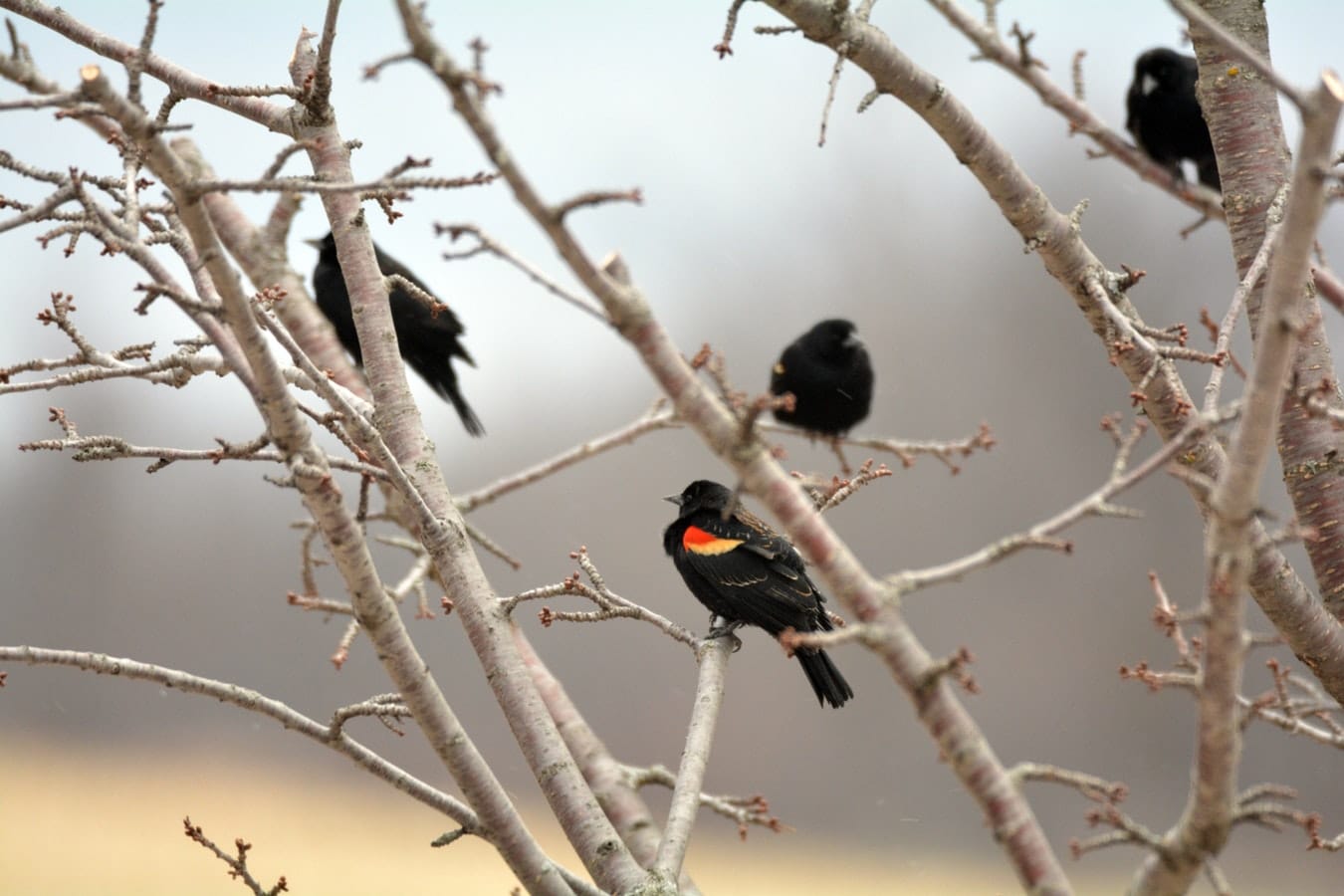Farmland Birds in France Are in Steep Decline

Scientists involved in long-running regional and national bird-counting surveys in France have reported precipitous declines in agricultural regions, even among common birds such as blackbirds that are well adapted to human activity and do well in most circumstances. They concluded, “We have to change completely the way we do agriculture.”
Like Europe, the U.S is losing insects, amphibians, reptiles, birds, fish and mammals. As just one example, we have had an 80 percent decline in quail in recent decades, as these hardy little birds have vanished across vast areas they have occupied for millennia.
Industrial agricultural practices with its ever-growing reliance on chemicals including fertilizers and a host of herbicides and pesticides is the primary problem; yet little is done. The agro-giants control the universities, agencies and legislatures who in effect support their misinformation by promoting use of chemicals and poisons, by repeating the myths of safe pesticides and by averting their eyes from the true dangers of these chemicals to wildlife, habitats, farmers and consumers.
NOTE: this article is from the NYTimes.com, and was published on April 11, 2018. It was written by James Gorman

Birds in farming regions of France are in trouble, and that may indicate problems in similar areas across Europe.
Scientists involved in long-running regional and national bird-counting surveys in France have reported precipitous declines in agricultural regions, even among common birds well adapted to human activity — the generalists, like blackbirds, that seem to do well in most circumstances.
This finding follows news of a devastating loss of insects in Germany, a decline of nearly 80 percent over the last 40 years. The drop is thought to be occurring throughout Europe.
The loss of birds has been going on for a long time. And in a sense it is no surprise that birds — as well as amphibians, reptiles and mammals — face population declines around the world because of habitat loss and other problems.
But the most recent results from two surveys — one nationwide in France, the other limited to one region — caused scientists to sound an alarm, because the results suggest that agricultural methods are hurting birds, according to Benoit Fontaine, a conservation biologist at the National Museum of Natural History in Paris and a leader of the national survey, conducted twice a year by volunteers.
“In the agricultural land,” he said, “there is something really bad going on.”
Over the past 17 years, the numbers of birds in farming areas have dropped by a third. Some of the species have declined even more: Meadow pipit populations, for example, fell by 68 percent. Dr. Fontaine described the situation as “catastrophic.”
He suspects that pesticides used in agriculture and intensification of land use are linked to the decline, although neither survey comes to conclusions about causes or makes any policy recommendations. But he pointed to the loss of insects, the major food source for many birds, as a likely result of pesticide use.
Vincent Bretagnolle, an ecologist at the Centre for Biological Studies Chizé, led the other survey, which has been conducted by scientists in the Deux-Sevres region in the western part of the country for 24 years. “Our results are completely in agreement with national and European surveys,” he said.
The trend is long-term, he said, except that recently, particularly at the national level, the dip has been steeper, and the more generalist bird species have been affected as they weren’t in the past.
Dr. Bretagnolle also suspected pesticides and more intensive use of land by farmers as a culprit, and said farmers in the area he surveys are trying different methods aimed at saving some species.
Worldwide, birds, like other wildlife, face a variety of threats. And not all species are in trouble. A report two years ago said that the problems for about a third of North American birds were urgent.
Some migratory birds, like the spoon-billed sandpiper in Asia, are down to perhaps fewer than 250 breeding pairs. And yet some migratory species, like snow geese in North America, are booming, to the detriment of their Arctic breeding grounds.
Farmland birds aren’t the only ones are in trouble in Europe. Another recent analysis of a number of studies showed that in northeastern Europe, birds were in a general decline, both residents and migrants. Four species were in the worst trouble: the ortolan bunting, the ruff, the golden oriole and the greenfinch.
Dr. Fontaine said, “There are solutions.” For one thing, he said “We have to change completely the way we do agriculture.” He recommended ways to reduce pesticides and leave more land uncultivated and undeveloped.
